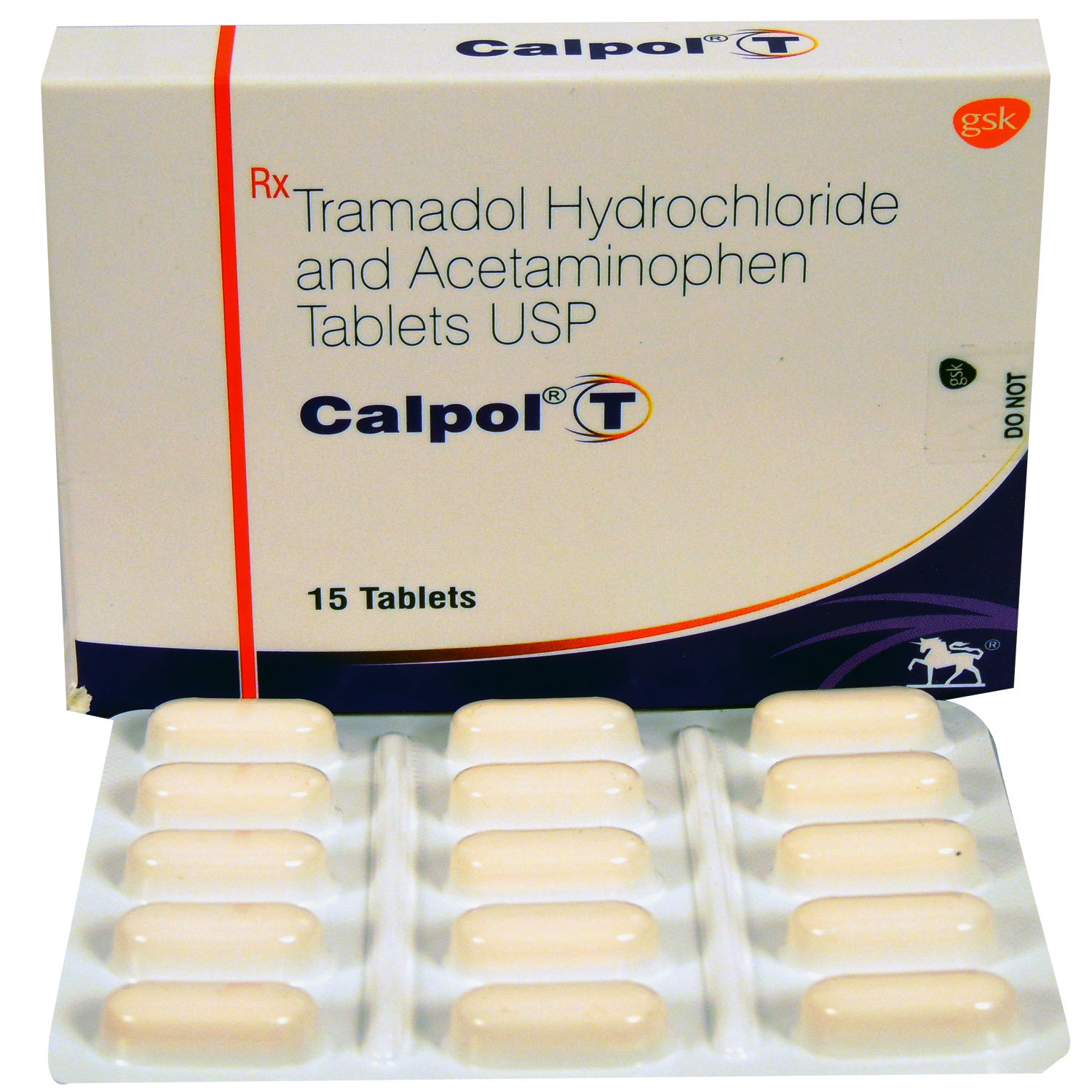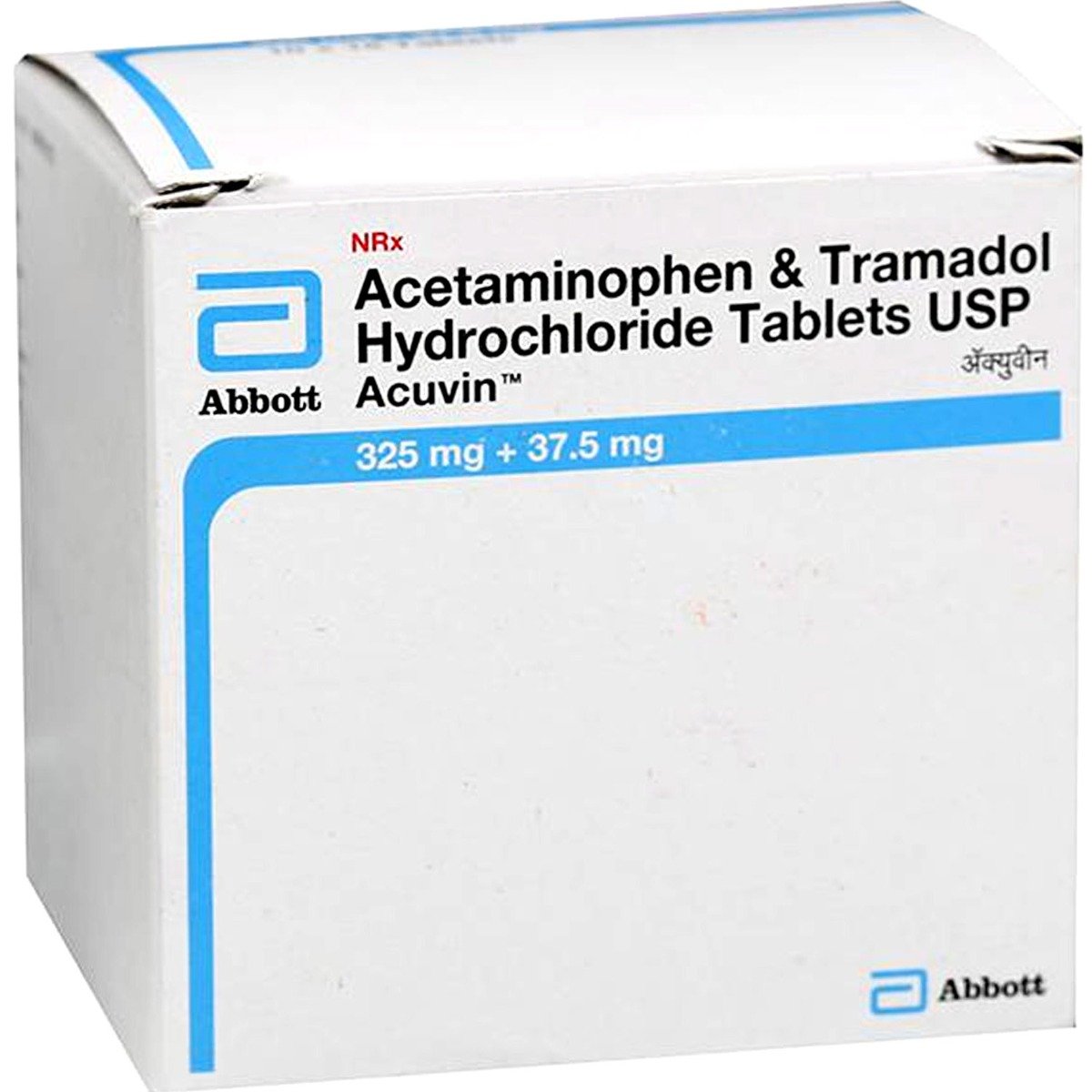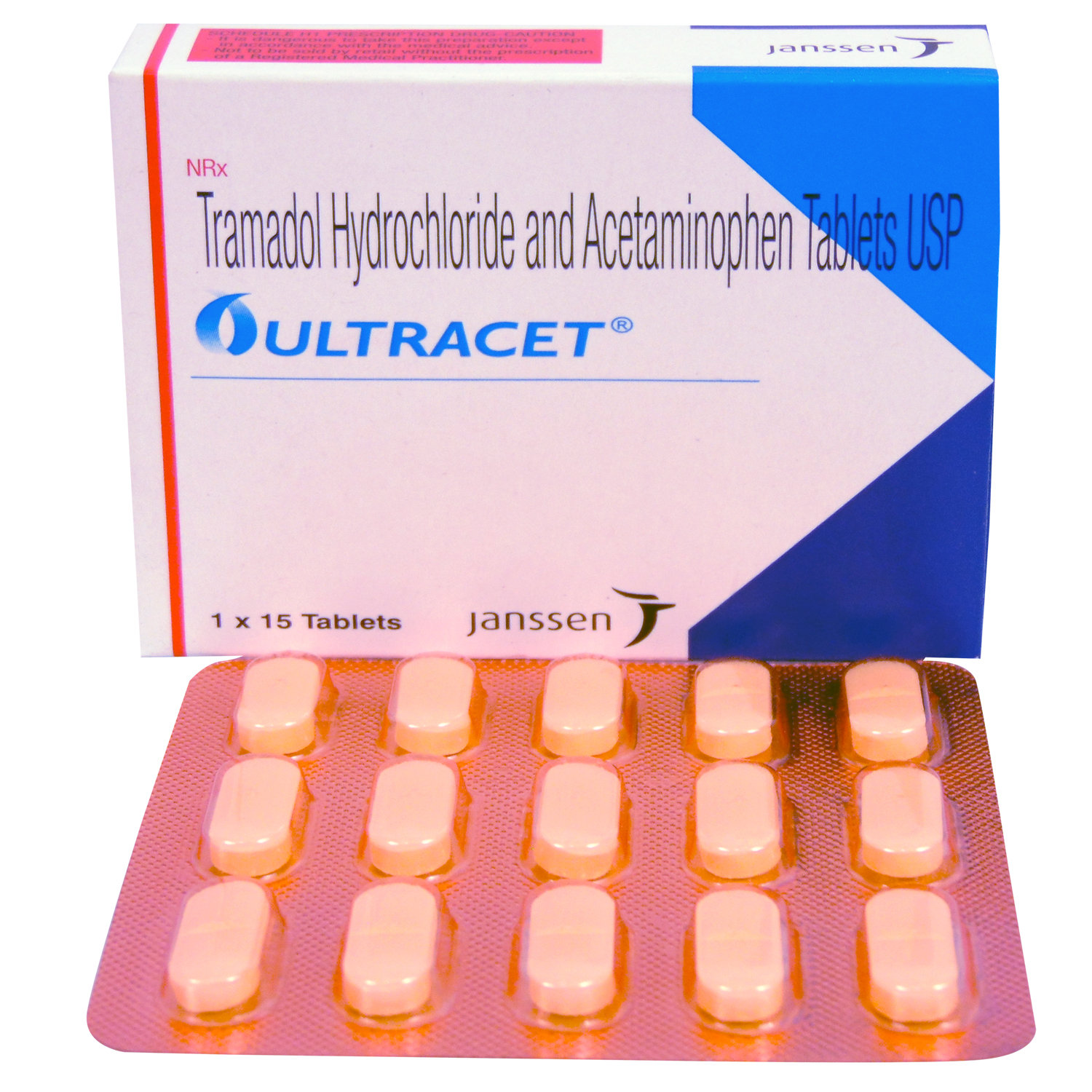Ultra-P Tablet 10's




MRP ₹124
(Inclusive of all Taxes)
₹18.6 Cashback (15%)
Provide Delivery Location
Online payment accepted
 Prescription drug
Prescription drugWhats That
Composition :
Manufacturer/Marketer :
Consume Type :
Expires on or after :
Return Policy :
About Ultra-P Tablet 10's
Ultra-P Tablet 10's belongs to the group of painkillers and analgesics used short-term to relieve moderate to severe pain. Pain is a sensation that occurs in response to external injury, stress, or infection and travels as an impulse through body cells, producing an unpleasant feeling and alerting the body to act.
Ultra-P Tablet 10's contains Tramadol and Paracetamol. Tramadol targets pain receptors in the central nervous system. It acts by blocking the nerve signals responsible for pain. Paracetamol acts as an analgesic by inhibiting the release of chemical mediators that cause pain. Tramadol and paracetamol, in combination, have a faster onset of action and provide quick relief from the pain. Altogether, they effectively reduce the pain.
Take Ultra-P Tablet 10's as prescribed. Ultra-P Tablet 10's may cause certain common side effects, such as nausea, vomiting, constipation, dry mouth, weakness, and blurred vision. However, all the patients may not develop the same side effects. Inform your doctor if you notice any abnormal side effects. Stop taking this medicine and consult a doctor immediately if you experience breathing problems.
It is advisable to inform the doctor if you are allergic to any of the components of Ultra-P Tablet 10's. Consult your doctor if you are pregnant, planning to get pregnant, or breastfeeding. Ultra-P Tablet 10's may cause dizziness, so drive only if you are alert. Avoid taking alcohol with Ultra-P Tablet 10's as it might lead to increased dizziness. Ultra-P Tablet 10's is not recommended for children younger than 12 years old.
Uses of Ultra-P Tablet 10's
Directions for Use
Key Benefits
Ultra-P Tablet 10's is used to treat pain. Tramadol targets pain receptors in the central nervous system. It acts by blocking the nerve signals responsible for pain. Paracetamol acts as an analgesic by inhibiting the release of chemical mediators that cause pain. Tramadol and paracetamol, in combination, have a faster onset of action and provide quick relief from the pain.
Storage
- Inform your doctor about dizziness symptoms. They may adjust your medication regimen or prescribe additional medications to manage symptoms.
- Follow your doctor's instructions for taking medication, and take it at the same time every day to minimize dizziness.
- When standing up, do so slowly and carefully to avoid sudden dizziness.
- Avoid making sudden movements, such as turning or bending quickly, which can exacerbate dizziness.
- Drink plenty of water throughout the day to stay hydrated and help alleviate dizziness symptoms.
- If you're feeling dizzy, sit or lie down and rest until the dizziness passes.
- Track when dizziness occurs and any factors that may trigger it, and share this information with your doctor to help manage symptoms.
- Inform your doctor about the nausea and discuss possible alternatives to the medication or adjustments to the dosage.
- Divide your daily food intake into smaller, more frequent meals to reduce nausea.
- Opt for bland, easily digestible foods like crackers, toast, plain rice, bananas, and applesauce.
- Avoid certain foods that can trigger nausea, such as fatty, greasy, spicy, and smelly foods.
- Drink plenty of fluids, such as water, clear broth, or electrolyte-rich beverages like coconut water or sports drinks.
- Use ginger (tea, ale, or candies) to help relieve nausea.
- Get adequate rest and also avoid strenuous activities that can worsen nausea.
- Talk to your doctor about taking anti-nausea medication if your nausea is severe.
- Record when your nausea occurs, what triggers it, and what provides relief to help you identify patterns and manage your symptoms more effectively.
- Hydrate your body: Drink enough water to prevent dehydration and headaches.
- Calm Your Mind: Deep breathing and meditation can help you relax and relieve stress.
- Rest and Recharge: Sleep for 7-8 hours to reduce headache triggers.
- Take rest: lie down in a quiet, dark environment.
- Cold or warm compresses can help reduce tension.
- Stay Upright: Maintain good posture to keep symptoms from getting worse.
- To treat headaches naturally, try acupuncture or massage therapy.
- Over-the-counter pain relievers include acetaminophen and ibuprofen.
- Prescription Assistance: Speak with your doctor about more substantial drug alternatives.
- Severe Headaches: Seek emergency medical assistance for sudden, severe headaches.
- Frequent Headaches: If you get reoccurring headaches, consult your doctor.
- Headaches with Symptoms: Seek medical attention if your headaches include fever, disorientation, or weakness.
Drug Warnings
Before taking the Ultra-P Tablet 10's, let your doctor know about all your allergic or hypersensitivity reactions to medicines or food. Withdrawal symptoms may occur if the Ultra-P Tablet 10's is suddenly stopped. Avoid taking high or repeated doses because they can lead to addiction. Inform your doctor if you are suffering from alcoholism or acute alcohol intoxication, liver disease, gastrointestinal obstruction, drug dependence, respiratory problems, and pulmonary impairment. Keep your doctor informed about your health condition and all the medicines you are taking before taking Ultra-P Tablet 10's to rule out any side effects.
Drug-Drug Interactions
Drug-Drug Interactions
Login/Sign Up
Taking rasagiline with Ultra-P Tablet can increase the risk of serotonin syndrome (A condition in which a chemical called serotonin increase in your body).
How to manage the interaction:
Taking Ultra-P Tablet with Rasagiline is not recommended, as it can lead to an interaction, but can be taken if advised by your doctor. However, if you experience any symptoms like severe headache, blurred vision, confusion, seizures, chest pain, nausea or vomiting, sudden numbness or weakness (especially on one side of the body), speech difficulties, fever, sweating, lightheadedness, and fainting, contact your doctor immediately. Do not discontinue any medications without first consulting your doctor.
Combining Tranylcypromine with Ultra-P Tablet can increase the risk of serotonin syndrome (a condition in which a chemical called serotonin increase in your body).
How to manage the interaction:
Taking Tranylcypromine with Ultra-P Tablet is not recommended, but can be taken together if prescribed by a doctor. However, consult a doctor if you experience confusion, hallucination(seeing and hearing things that do not exist), fits, blood pressure alteration, increased heart rate, fever, excessive sweating, shivering or shaking, blurred vision, pain in the muscles or stiffness, incoordination, stomach cramps, nausea, vomiting, and diarrhea. Do not discontinue any medications without consulting your doctor.
Taking Safinamide with Ultra-P Tablet can increase the risk of serotonin syndrome (A condition in which a chemical called serotonin increase in your body).
How to manage the interaction:
Taking Safinamide with Ultra-P Tablet is not recommended as it can possibly result in an interaction, but can be taken together if prescribed by a doctor. However, consult a doctor if you experience confusion, hallucination(seeing and hearing things that do not exist), fits, blood pressure alteration, increased heart rate, fever, excessive sweating, shivering or shaking, blurred vision, pain in the muscles or stiffness, incoordination, stomach cramps, nausea, vomiting, and loose stools. Do not discontinue any medications without consulting your doctor.
Combining Phenelzine with Ultra-P Tablet can increase the risk of serotonin syndrome and seizures.
How to manage the interaction:
Taking Ultra-P Tablet with Phenelzine is not recommended, please consult your doctor before taking it.
Co-administration of Linezolid with Ultra-P Tablet can increase the risk of serotonin syndrome and seizures.
How to manage the interaction:
Taking Linezolid with Ultra-P Tablet is not recommended, consult a doctor before taking it. Consult a doctor if you experience confusion, hallucination, seizure, extreme changes in blood pressure, increased heart rate, fever, excessive sweating, shivering or shaking, blurred vision, muscle spasm or stiffness, tremor, incoordination, stomach cramp, nausea, vomiting, and diarrhea. Do not stop using any medications without talking to a doctor.
Co-administration of Ultra-P Tablet with Alvimopan can make the side effects worse or more dangerous.
How to manage the interaction:
Taking Alvimopan with Ultra-P Tablet is not recommended, please consult your doctor before taking it.
Co-administration of Ziprasidone with Ultra-P Tablet can increase the risk of irregular heart rhythm.
How to manage the interaction:
Taking Ultra-P Tablet with Ziprasidone together can possibly result in an interaction, but it can be taken if a doctor has advised it. However, consult a doctor immediately if you experience sudden dizziness, lightheadedness, fainting, shortness of breath, or heart palpitations. Do not discontinue any medications without consulting a doctor.
Co-administration of Ultra-P Tablet may decrease the excretion rate of Oxazepam which could result in a higher serum level.
How to manage the interaction:
Although there is a possible interaction between Oxazepam and Ultra-P Tablet, you can take these medicines together if prescribed by a doctor. Do not stop using any medications without a doctor's advice.
Co-administration of ketamine and Ultra-P Tablet may decrease the effectiveness of Ketamine which could result in a higher blood level.
How to manage the interaction:
Although taking Ketamine and Ultra-P Tablet together can evidently cause an interaction, it can be taken if a doctor has suggested it. If you're feeling very sleepy or having trouble breathing, it's important to contact your doctor right away. Do not stop using any medications without a doctor's advice.
Co-administration of Teriflunomide with Ultra-P Tablet may increase the risk or severity of Liver problems.
How to manage the interaction:
Taking Ultra-P Tablet with Teriflunomide together can possibly result in an interaction, but it can be taken if a doctor has advised it. Do not discontinue any medications without consulting a doctor.
Drug-Food Interactions
Drug-Food Interactions
Login/Sign Up
Diet & Lifestyle Advise
- Stay hydrated by drinking plenty of water.
- Invest in a balanced diet. Load up on lean meats, fruits, green leafy vegetables, nuts, oily fish etc. Limit your intake of sweets and sugars, as these can worsen inflammation.
- Cut back on alcohol as this can have an adverse effect on pain states as well as the quality of your sleep.
- Try meditation and deep breathing to reduce overall stress and pain.
- Stop smoking as smoking is known to worsen pain conditions.
- Engage in mild physical exercise daily and keep your body active.
Side Effects of Ultra-P Tablet 10's
- Nausea
- Vomiting
- Constipation
- Diarrhoea
- Redness
- Itching, or rash at the site of injection
- Sweating
- Headache
- Confusion
- Nervousness
- Sleep problems
Habit Forming
Therapeutic Class
All Substitutes & Brand Comparisons
RX
Not for online saleKdol-P Tablet 10's
Kavach 9 Pharma & Research Pvt Ltd
₹76.5
(₹6.89 per unit)
38% CHEAPERRX
Not for online saleCalpol T Tablet 15's
GlaxoSmithKline Pharmaceuticals Ltd
₹115.5
(₹6.93 per unit)
37% CHEAPERRX
Not for online saleUltranise Tablet 10's
Dr Reddy's Laboratories Ltd
₹82.5
(₹7.43 per unit)
33% CHEAPER
Product Substitutes
Drug-Diseases Interactions
Drug-Diseases Interactions
Login/Sign Up
FAQs
Ultra-P Tablet 10's contains Tramadol and Paracetamol. Tramadol targets pain receptors in the central nervous system. It acts by blocking the nerve signals responsible for pain. Paracetamol acts as an analgesic by inhibiting the release of chemical mediators that cause pain. Tramadol and paracetamol, in combination, have a faster onset of action and provide quick relief from the pain. Altogether, they effectively reduce the pain.
While Ultra-P Tablet 10's is safe for treating pain, Ultra-P Tablet 10's is not meant for long-term use because it can damage the kidneys and/or cause internal bleeding if used for longer durations.
No, Consult a doctor before taking Ultra-P Tablet 10's for any condition. It is not advised to use Ultra-P Tablet 10's without a doctor's recommendation.
No, Ultra-P Tablet 10's is not indicated for stomach pain. Also, if you have stomach pain post ingestion it may be a sign of stomach ulcer or gastric bleeding. Do not take Ultra-P Tablet 10's in this condition. It is better to inform your doctor in case of stomach pain post ingestion of this medication.
Your doctor decides the dose and duration of the medicine depending on your health condition. It is generally not used for more than five days, as prolonged usage may lead to dependence.
Drug-Drug Interactions Checker List
- DULOXETINE
- ESCITALOPRAM
- ALPRAZOLAM
- CARBAMAZEPINE
- CYCLOBENZAPRINE
- PREGABALIN
- BUPRENORPHINE
- NALBUPHINE
- PENTAZOCINE
Disease/Condition Glossary
Pain: Pain is a sensation that occurs in response to external injury, stress, or infection and travels as an impulse through body cells, producing an unpleasant feeling and alerting the body to act. Pain relief in pharmacological terms is called analgesia. Various neurotransmitters and their equilibrium are instrumental in producing pain sensations.

Have a query?
Buy best C.n.s Drugs products by
Intas Pharmaceuticals Ltd
Sun Pharmaceutical Industries Ltd
Torrent Pharmaceuticals Ltd
Alkem Laboratories Ltd
Abbott India Ltd
Cipla Ltd
Alteus Biogenics Pvt Ltd
Micro Labs Ltd
Lupin Ltd
Ipca Laboratories Ltd
D D Pharmaceuticals Pvt Ltd
Icon Life Sciences
Mankind Pharma Pvt Ltd
Tripada Healthcare Pvt Ltd
Arinna Lifesciences Ltd
Linux Laboratories Pvt Ltd
East West Pharma India Pvt Ltd
La Renon Healthcare Pvt Ltd
Talent India Pvt Ltd
Tas Med India Pvt Ltd
Zydus Healthcare Ltd
Cnx Health Care Pvt Ltd
Eris Life Sciences Ltd
Leeford Healthcare Ltd
Emcure Pharmaceuticals Ltd
Macleods Pharmaceuticals Ltd
Sigmund Promedica
Aristo Pharmaceuticals Pvt Ltd
Dr Reddy's Laboratories Ltd
Troikaa Pharmaceuticals Ltd
Consern Pharma Ltd
Zydus Cadila
Shine Pharmaceuticals Ltd
Wockhardt Ltd
Ardent Life Sciences Pvt Ltd
Crescent Formulations Pvt Ltd
Theo Pharma Pvt Ltd
Reliance Formulation Pvt Ltd
Ikon Pharmaceuticals Pvt Ltd
Propel Healthcare
Neon Laboratories Ltd
Jagsam Pharma
Msn Laboratories Pvt Ltd
Morepen Laboratories Ltd
Pulse Pharmaceuticals
Sanofi India Ltd
Med Manor Organics Pvt Ltd
Hetero Healthcare Pvt Ltd
Novartis India Ltd
Crescent Therapeutics Ltd
Elder Pharmaceuticals Ltd
Solvate Laboratories Pvt Ltd
Akumentis Healthcare Ltd
Mova Pharmaceutical Pvt Ltd
Psyco Remedies Ltd
Tripada Lifecare Pvt Ltd
Ajanta Pharma Ltd
Cyrus Remedies Pvt Ltd
Medishri Healthcare Pvt Ltd
Cadila Healthcare Ltd
Glenmark Pharmaceuticals Ltd
Matteo Health Care Pvt Ltd
Hbc Life Sciences Pvt Ltd
Lyf Healthcare
Matias Healthcare Pvt Ltd
Mesmer Pharmaceuticals
Alembic Pharmaceuticals Ltd
Capital Pharma
Crescent Pharmaceuticals
Medopharm Pvt Ltd
Alniche Life Sciences Pvt Ltd
Kivi Labs Ltd
Talin Remedies Pvt Ltd
USV Pvt Ltd
Quince Lifesciences Pvt Ltd
Solis Pharmaceuticals
Infivis Life Care
Zuventus Healthcare Ltd
Cadila Pharmaceuticals Ltd
Pfizer Ltd
Wallace Pharmaceuticals Pvt Ltd
A N Pharmacia Laboratories Pvt Ltd
Blue Cross Laboratories Pvt Ltd
Jenburkt Pharmaceuticals Ltd
Lia Life Sciences Pvt Ltd
Mano Pharma
Medley Pharmaceuticals Ltd
Primus Remedies Pvt Ltd
FDC Ltd
Maneesh Pharmaceuticals Ltd
Apex Laboratories Pvt Ltd
Gagnant Healthcare Pvt Ltd
Ozone Pharmaceuticals Ltd
RPG Life Sciences Ltd
Strides Shasun Ltd
Unichem International
GlaxoSmithKline Pharmaceuticals Ltd
Kuresys Labs Pvt Ltd
LA Pharma
Trion Pharma India Llp
Alcohol
Safe if prescribed
You are advised not to take alcohol with Ultra-P Tablet 10's as it can make you dizzier.
Pregnancy
Consult your doctor
Ultra-P Tablet 10's is not recommended for use in pregnant women. If you have concerns, discuss them with the doctor.
Breast Feeding
Consult your doctor
Avoid breastfeeding while taking Ultra-P Tablet 10's as it may be excreted in breast milk and cause adverse effects in the baby.
Driving
Safe if prescribed
Ultra-P Tablet 10's may cause dizziness. Therefore, it is advised not to drive when taking Ultra-P Tablet 10's.
Liver
Consult your doctor
Ultra-P Tablet 10's should be used with caution in patients with liver diseases/conditions. Therefore, the doctor may adjust the dose while using it in patients with liver diseases.
Kidney
Consult your doctor
Tell your doctor before receiving the Ultra-P Tablet 10's if you have a history of kidney diseases/conditions. Your doctor may adjust your dose depending upon your current kidney conditions.
Children
Safe if prescribed
Ultra-P Tablet 10's is not recommended for use in children below 12 years of age.














